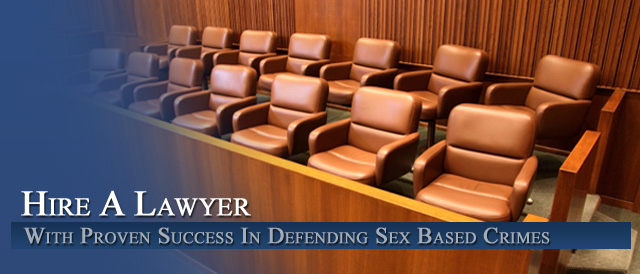




Colorado Criminal Sex Crimes Laws: Why Colorado Juvenile Sex Offenders Should Be Treated Differently Than Adult Sex Offenders – The Research*
by Denver, Colorado Criminal Defense Lawyer for the Defense of Colorado Juveniles Charged With Juvenile Sex Crimes
The prosecution of Juvenile sex offenders compels law enforcement prosecuting these cases to be well aware that age, maturity, cognitive functioning, and other developmental factors that may impact mens rea (criminal intent) or competency issues.
It has been my experience that kids – experiment -that’s what they do. It does not mean they are sex offenders and it certainly means they SHOULD NOT be treated in any fashion as adults.
The use of such tools, assuming legal responsibility can be proven, should focus primarily on such legal methods of prosecution such as deferred prosecution, informal adjustments, and juvenile court diversion.
Indeed, applying the same legal strategies to youth that were designed for adults may result in unintended negative consequences and could lead to undesirable outcomes.
Thorough investigations and relevant forensic evaluations can assist prosecutors with making informed decisions about how best to proceed.
Alleged Juvenile Sex Offenders Should Be Treated Differently
The Research Supports This Juveniles commit a significant number of the sexual assaults against children and women in this country. The onset of sexual offending behavior in these youth can be linked to numerous factors reflected in their experiences, exposure, and/or developmental deficits.
Emerging research suggests that, as in the case of adult sex offenders, a meaningful distinction can be made between youth who target peers or adults and those who offend against children. However, juveniles who sexually offend are distinct from their adult counterparts.
Youth who commit sexual offenses are not necessarily “little adults;” many will not continue to offend sexually. This is a formative area of research; while there is an ever-increasing body of knowledge regarding the etiologies of dysfunction and aggression, there remains a tremendous need for additional data to understand the etiology of juveniles sexual offending.
The purpose of this web page is to discuss the research on alleged sexually abusive youth.
A number of etiological factors (risk factors) have been identified to help explain the developmental origin of sexual offending.
Factors receiving the most attention are abusive experiences and exposure to aggressive role models. Other factors in focus are substance abuse and exposure to pornography; however, these are seen more as dis-inhibitors than as causal influences.
The Effects of Physical and Sexual Abuse
Recent studies show that rates of abusive histories vary widely for sexually abusive youth.
A history of physical abuse has been found in 20 to 50 percent of these youth; a history of sexual abuse has been found in 40 to 80 percent of sexually abusive youth
Rates of physical abuse and sexual victimization are even higher in samples of prepubescent and young female sexual abusers
The research suggests that age of onset, number of incidents of abuse, the period of time elapsing between the abuse and its first report, as well as perceptions of familial responses to awareness of the abuse are all relevant in understanding why some sexually abused youths go on to commit sexual assaults while others do not.
The influence of abusive experiences is considered multi-faceted and includes effects related to both Post-Traumatic Stress Disorder and modeling.
Symptoms of Post-Traumatic Stress Disorder have been observed in a number of youths with sexual behavior disorders, especially children ages 13 and younger and females. These symptoms include recurrent and intrusive recollections of past traumatic events and increased levels of irritability and anger. Youths who have directly experienced or witnessed sexual abuse may imitate the behavior of the aggressive role model(s) in their interactions with others.
The presence of child maltreatment—whether neglect, physical abuse, sexual abuse, or other forms of victimization—may eventually prove to be a significant predictor of sexual offending behavior.
Exposure to Aggressive Role Models
Studies show that male child witnesses to domestic violence tend to engage in externalizing behaviors (the acting-out of psychological conflict or tension), including acts of interpersonal aggression, more than their female counterparts.
Exposure to family violence is linked to the likelihood of sexually offending as an adolescent, as well as the severity of psychosexual disturbance. The effects of exposure may be cumulative, as well as interactive with other developmental experiences, such as child abuse and neglect. Recent studies suggest that exposure to severe community violence (e.g., murders) may also increase the likelihood of engaging in violent and antisocial behavior.
Substance Abuse and Exposure to Pornography
While there is strong research to support the association between violent crime and alcohol use, the association between sexual offending and substance abuse is not fully established. Estimates of the extent of substance abuse vary widely for the population of youth who sexually offend.
The influence of pornography on the developing male’s potential for sexual offending is an issue of similar controversy. One recent study found that sexually abusive youth were exposed to pornographic material at younger ages on the average, and to “harder core” pornography, than either status offenders or violent non-sex offending youths. Research in these areas is lacking and clearly, juvenile sexual offending is far more complex than simple exposure to pornography or substance abuse.
Developmental Progression
While sexual aggression may emerge early in the developmental process, there is no evidence to suggest that the majority of sexually abusive youth become adult sex offenders.
Recidivism rates for these youth may have been exaggerated by a reliance on retrospective research studies (studies that examine historical data), which can overstate the strength of correlations. Longitudinal studies (studies that examine current data), which tend to be more reliable, suggest that aggressive behavior in youths often does not continue into adulthood, although some portion of those who commit rape may continue to abuse.
Other Characteristics Common to Sexually Abusive Youth
Sexually abusive youth share other common characteristics, including: high rates of learning disabilities and academic dysfunction (30 to 60 percent)
…the presence of other behavioral health problems, including substance abuse and conduct disorders (up to 80 percent have the same diagnosable psychiatric disorder)
and
observed difficulties with impulse control and judgment.
The clinical and criminal dimensions of juvenile male sexual abusers often vary. As with their adult counterparts, juvenile sexual abusers fall primarily into two major types: those who target children and those who offend against peers or adults.
Deviant Sexual Interests
A minority of sexually abusive youth manifest established paraphilic (deviant) sexual arousal and interest patterns. These arousal and interest patterns are recurrent and intense, and relate directly to the nature of the sexual behavior problem (e.g., sexual arousal to young children).
Deviant sexual arousal is more clearly established as a motivator of adult sexual offending, particularly as it relates to pedophilia. A small subset of juveniles who sexually offend against children may represent cases of early onset pedophilia. Research has demonstrated that the highest levels of deviant sexual arousal are found in juveniles who exclusively target young male children, specifically when penetration is involved.
In general, the sexual arousal patterns of sexually abusive youth appear more changeable than those of adult sex offenders, and relate less directly to their patterns of offending behavior.
Treatment Research – Juvenile Sex Offenders Are Particularly Amenable to Treatment
While funding and ethical issues have made it difficult to conduct carefully controlled treatment outcome studies, a number of encouraging clinical reports on the treatment of sexually abusive youth have been published. While these studies are not definitive, they provide support for the belief that the majority of sexually abusive youth are amenable to, and can benefit from, treatment.
Multisystemic Therapy
In what is perhaps the best controlled study to date, Borduin, Henggeler, Blaske, and Stein compared “Multi systemic Therapy” (MST) with individual therapy in the outpatient treatment of 16 juvenile sex abusers.
MST is an intensive family- and community-based treatment that addresses the multiple factors of serious antisocial behavior in juvenile abusers. Treatment can involve any combination of the individual, family, and extra familial (e.g., peer, school, or neighborhood) factors.
MST promotes behavior change in the youth’s natural environment, using the strengths of the youth’s family, peers, school, and neighborhood to facilitate change.
In this study, re- arrest records were used as a measure of sexual and non-sexual recidivism; the groups were compared at a three-year follow-up interval. Results revealed that youths receiving multi systemic therapy had recidivism rates of 12.5 percent for sex offenses and 25 percent for non-sex offenses, while those receiving individual therapy had recidivism rates of 75 percent for sex offenses and 50 percent for non-sex offenses.
Other Treatment Research
Program evaluation data suggests that the sexual recidivism rate for juveniles treated in specialized programs ranges from approximately 7 to 13 percent over follow-up periods of two to five years.
Furthermore, juveniles appear to respond well to cognitive/behavioral and/or relapse prevention treatment, with recidivism rates of approximately seven percent through follow-up periods of more than five years.
Studies suggest that rates of non-sexual recidivism are generally higher (25 to 50 percent).
Findings from outcome studies on adult offenders show higher sexual recidivism rates for individuals who fail to successfully complete treatment programs.
In a recently conducted study, Hunter and Figueredo found that as many as 50 percent of youths entering a community-based treatment program were expelled during the first year of their participation. Those who failed the program had higher overall levels of sexual maladjustment, as measured on assessment instruments, and were judged to be at greater long-term risk for sexual recidivism.
Presently, more than half of the states permit public access to juvenile court records with some age and offense restrictions, while eleven states (AZ, AR, CO, FL, IA, MI, MT, NV, NM, TX, and WA) permit public juvenile hearings with no age or crime restrictions (Szymanski, 1998).
Registration and Community Notification Laws
The registration and tracking of individuals convicted of violent sex crimes or crimes against minors began with the passing of the 1994 Jacob Wetterling Act.
The Wetterling Act was amended in 1996, with the passage of “Megan’s Law,” which requires (as opposed to authorizing) state and local law enforcement agencies to release information that is necessary to protect the public concerning a specific person required to register. The Pam Lychner Sexual Offender Tracking and Identification Act of 1996 created criteria for mandatory lifetime registration of highly-dangerous sex offenders, penalties for failure to register, and a requirement that the FBI create a national sex offender registry to assist law enforcement in tracking sex offenders when they move.
Coordination between the Criminal Justice System and Treatment Providers
Most treatment specialists believe that successful programming for sexually abusive youth requires a coordinated effort between criminal justice system actors and treatment providers (National Task Force on Juvenile Sexual Offending, 1993). For juveniles to productively participate in treatment programming, they must be willing to address their problems and comply with therapeutic directives. Adjudication and supervision typically prove useful in ensuring client accountability and compliance with treatment, as well as a means to prevent future victimization.
Clinical experience has demonstrated that the suspension of the youth’s sentence contingent upon his or her successful completion of a treatment program is a particularly effective motivator. Under collaborative arrangements, the treatment specialist provides ongoing progress reports to the courts. Those youth who fail to comply with program expectations can be brought back before the court for review.
Pilot Program: Jefferson County, Colorado
In Jefferson County, when juveniles are arrested for a sex offense, they are taken to an assessment center and administered a risk-screening instrument. This instrument determines whether these youth will be detained or allowed to remain in the community, either at home or in another alternative placement such as foster care. The assessment center works with the family and youth, and can refer family members to community counseling, if necessary. Under this process, treatment can start before sentencing occurs.
Juveniles start probation at the highest level of supervision. They are sentenced to probation for a maximum of two years. Youth participate in a risk and protective factor process to determine the most applicable treatment. Probation officers meet frequently with treatment providers, and in some instances, they may attend treatment sessions about once a month to observe first hand their clients’ progress in treatment. Juveniles are also administered polygraphs and plethysmographs when therapists or probation officers feel they are needed. Conditions of probation include the need to comply with polygraph or plethysmograph assessment if deemed useful by the treatment provider.
Jefferson County also has established a county-wide case management team for juveniles, consisting of pre-trial and probation supervision staff, treatment providers, a child advocacy center representatives, staff from the prosecutor’s office and the schools. This team meets monthly to assess each case and work together to ensure that both clients and victims are receiving optimal service.
In May 1998, the juvenile supervision guidelines developed by the Jefferson County unit were recommended for use throughout Colorado.
Typically, probation officers provide an essential case management function. This includes analysis (sometimes with the help of social services) of the appropriateness of youth receiving in-home treatment and of the need for supplemental community programming, such as community service projects. As case managers, parole/probation officers also facilitate appropriate communications between treatment providers and other community agencies, such as school officials involved in the youths’ overall care.
Assessment
Careful screening is critical to the success of community-based programming. Ideally, this assessment reflects the careful consideration of the danger that the perpetrator presents to the community, the severity of psychiatric and psychosexual problems, and the juvenile’s amenability to treatment.
The latter issues involve an assessment of the youth’s level of accountability for his or her sex offenses, motivation for change, and receptivity to professional help. Professionals who are experienced working with sexually abusive youth should conduct these evaluations. Programs should not compromise community safety by admitting youths who are more aggressive and violent, those who have psychiatric problems that are beyond the scope of the community-based program, or those who demonstrate little regard for their actions or interest in receiving help.
Clinical Assessment
Professional evaluation of youth and their appropriateness for placement should be conducted post-adjudication and prior to court sentencing. Clinical assessments should be comprehensive and may include careful record review, clinical interviewing, screening for co-occurring psychiatric disorders, and the administration of both specialized psychometric instruments designed to assess sexual attitudes and interests, as well as those related to more global personality adjustment and functioning.
Specialized Assessment Instruments
Multiphasic Sex Inventory (Nichols and Molinder, 1984)
Adolescent Cognitions Scale (Hunter et al, 1991)
Adolescent Sexual Interest Card Sort (Hunter et al, 1991)
Inventories Appropriate for Children with Sexual Behavior Problems
Child Sexual Behavior Inventory (Friedrich et al, 1991)
General Assessment Instruments
MMPI-A (Archer, 1997)
Child Behavior Checklist (Achenbach et al, 1987)
Family Environment Scale (Moos and Moos, 1986)
Child and Adolescent Functional Assessment Scale (Hodges et al, 1982)
Adjunctive Assessment Tools*
Plethysmograph
Polygraph
(*There is little research on these tools to determine whether they are effective on juvenile populations.)
Assessment of the Youth’s Home
Assessments of the juvenile’s appropriateness for community-based programming most often include a thorough review of his or her living arrangements, as well as a determination as to whether his or her parents are capable of supervising the youth.
Assessment includes evaluation of whether the living environment affords the level of structure and supervision necessary for the youth while providing for the safety of others in the home and the community. Special consideration here is given to the needs and concerns of individuals living in the home who may have been victimized by the youth (e.g., younger siblings).
Law Enforcement and Social Services focuses on the near obsession that other children are protected from potential harm, both physical and psychological.
The will ver often place a juvenile who sexually offends against family members temporarily outside of the home. These young people are NOT RETURNED HOME until “sufficient clinical progress is attained, and issues of safety and psychological comfort of family members are resolved. “
For an adjudicated youth, this decision is typically made by the presiding judge with input from the probation officer and social services worker, the youth’s treatment provider, the provider of services to family victim(s), and the youth’s family.
Clinical Programming
Clinical programming for sexually abusive youth typically includes a combination of individual, group, and family therapies. In addition, many programs offer supportive educational groups to families of these youth.
Juveniles who display more extensive psychiatric or behavioral problems, such as substance abuse, are often required to perform additional treatment, including drug and alcohol rehabilitation and psychiatric care.
Providers have established the following as essential components of the treatment process:
Gaining control of behavior.
Teaching the impulse control and coping skills needed to successfully manage sexual and aggressive impulses.
Teaching assertiveness skills and conflict resolution skills to manage anger and resolve interpersonal disputes.
Enhancing social skills to promote greater self-confidence and social competency.
Programming designed to enhance empathy and promote a greater appreciation for the negative impact of sexual abuse on victims and their families.
Provisions for relapse prevention.
This includes teaching youths to understand the cycle of thoughts, feelings, and events that are antecedent to the sexual acting-out, identify environmental circumstances and thinking patterns that should be avoided because of increased risk of re-offending, and identify and practice coping and self-control skills necessary for successful behavior management.
Establishing positive self-esteem and pride in one’s cultural heritage.
Teaching and clarifying values related to respect for self and others, and a commitment to stop interpersonal violence. The most effective programs promote a sense of healthy identity, mutual respect in male-female relationships, and a respect for cultural diversity.
Providing sex education to give an understanding of healthy sexual behavior and to correct distorted or erroneous beliefs about sexual behavior.
Risk Assessment
The courts frequently give clinicians the responsibility of determining the youth’s risk of recidivism. These assessments are used to make dispositional decisions and, as a result of legislative mandates, have potential relevance in determining which juveniles should be placed on state registries, as well as whether information about certain sexually abusive youth should be released to the public.
Unfortunately, risk assessment, especially risk of violence, remains an inexact science. Although a number of risk assessment instruments are emerging as promising in the assessment of risk of adult sex offenders, to date none of these have been validated on a juvenile population. At this time, clinicians working with sexually abusive youth rely on experience, existing research on delinquency and pro-social functioning of youth, and retrospective and actuarial information on adults who re-offend in making their evaluations of the risk posed by a youth.
A recent study has presented encouraging findings on an actuarial scale for assessing risk among adolescent sexual abusers (Prentky et al, in press). In this study, the Juvenile Sex Offender Assessment Protocol (J-SOAP) was used to assess risk on 96 youth receiving treatment in an institutional setting. Results from a 12-month follow-up period suggest that the instrument is reliable, internally consistent and appears to possess concurrent and predictive validity. The J-SOAP is currently being used in a variety of locations and continues to be the subject of empirical scrutiny.
Phallometric Assessment
Phallometry is a diagnostic method to assess sexual arousal by measuring blood flow (tumescence) to the penis during the presentation of potentially erotic stimuli in the laboratory. The plethysmograph is a tool commonly used in phallometric assessment. Use of the plethysmograph with juveniles is an issue of some controversy (National Task Force on Juvenile Sexual Offending, 1993).
Research suggests that issues of client age and denial compromise the validity of plethysmographic assessment of juveniles. Younger clients appear to produce less reliable patterns of responding, and those who deny their offenses tend to produce suppressed, and therefore non-interpretable, patterns of arousal.
Most practitioners agree that phallometric assessment should not be used on youth under the age of 14. Phallometric assessments of sexual arousal patterns are most appropriate for older adolescent males who report deviant sexual interest, and/or those juveniles with more extensive histories of sexual offending. Under these circumstances, such assessments may be useful for identifying youths with emergent paraphilic (sexual deviation) disorders as well as helping youth to become more aware of patterns and strengthen non-problematic interests.
Polygraph
The purpose of a polygraph examination is to verify a perpetrator’s completeness regarding offense history and compliance with therapeutic directives and terms of supervision. The polygraph is used more often with adult offenders than with juveniles. To date, there is little research on the polygraph’s reliability and validity in the evaluation of sexually abusive youth. Research suggests that results potentially can be affected by a number of influences, including the client’s physical and emotional status, the client’s age and intelligence, and the examiner’s level of training and competency. Most practitioners using the polygraph indicate that the age threshold for use with juveniles is approximately 14 years old.
National Task Force on Juvenile Sexual Offending, 1993).
While several reports about the use of drug therapy have appeared over the past few years, little information exists about the safety and effectiveness of these drugs when used on juveniles. In particular, anti-androgens and hormonal agents have typically not been used with individuals under the age of 18 because of their potential suppression of growth, and the other yet unknown long term risk that they may present. Selective Serotonin Reuptake Inhibitors (SSRIs) are helpful in reducing the frequency and/or intensity of sexual arousal and thoughts. SSRIs are a class of antidepressant drugs known to cause a decrease in sexual arousal. Further research is examining the effectiveness of such drugs in reducing deviant sexual behavior.
Legal and Clinical Concerns
Subjecting juveniles to stricter penalties for sex offenses poses special legal and clinical concerns. Legal issues can arise in the courtroom when determining if these youth have the capacity to understand their cases, to properly consult their attorneys, or to make sound decisions regarding their defense (Grisso, 1997). Clinical concerns arise when clinicians place demands on their clients to divulge information that may incur additional restrictions or legal sanctions.
Proper warning regarding the limits of confidentiality is necessary and may include referral to parents or attorneys prior to encouraging such disclosures. In many jurisdictions, clinicians develop policies with district attorneys to clarify the consequences of new disclosures in the course of treatment (National Task Force on Juvenile Sexual Offending, 1993).
Without these precautions, the reporting of such information may interfere with the development of the therapist/client relationship, an essential component of the treatment process, and increase clinician vulnerability to civil suit.
Other Articles of Interest:
- Colorado Shared Living Arrangements: What Are They- How Do They Work? – Why Does the SOMB Use Them in Colorado
- Understanding the Juvenile Sex Offender and Treatment Modalities in Colorado
- Are Colorado Juveniles Who Are Adjudicated As Sex Offenders – Required to Register Along With Adults? – Who Is Required to Register as a Sex Offender? Colorado Sex Offender Registration
- Colorado Juvenile Sex Offender Concepts – Understanding Why Juvenile Sex Crimes Are Different From Adult Sex Crimes
- Colorado Criminal Sex Offender Laws – The Impact of Denial (of the Crime) in Colorado Sex Offender Cases and the Use of the Polygraph in Denier Cases












